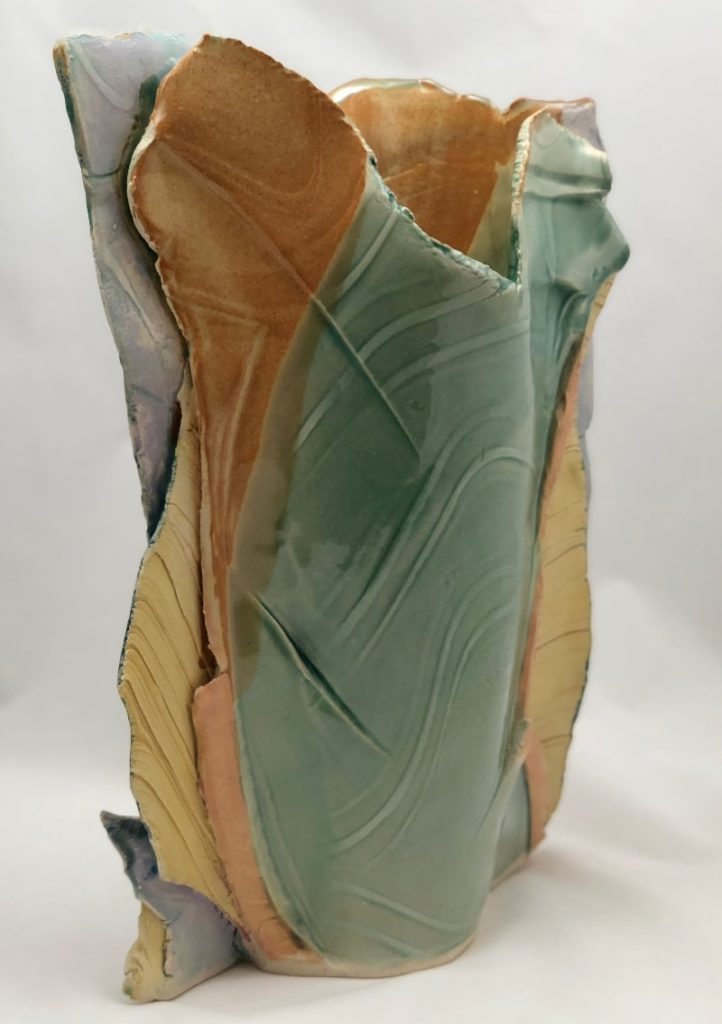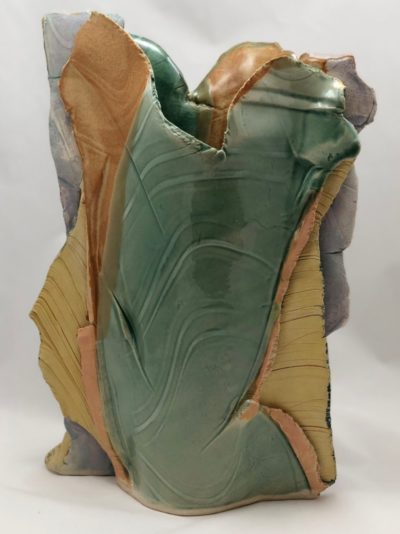The elements that interconnect in my vases come from many places. I like to create surfaces that combine my sense of geology, time, water, wind.
But I also want to bring in influences from other areas of ceramic history that influenced me. I like to imitate the surfaces of Japanese ceramics for instance. In both Korea and Japan, the white flowing decorative slip underneath the light celadon glaze is something I enjoy “quoting” in my work. The preference in Japan to combine this look with rough, rock-like surfaces and Shino glazes gives a nod toward Nature. It is an aesthetic that honors the multiple faces of nature – the smooth water, the beach sand, the rock or cliff face, all in one tiny tea bowl.
The form derives from the female torso, the vase combined with the canyon. I have fragmented and torn these forms and then recombined them to increase the geological feeling of plate tectonics or layering of time and history. To bring the puzzle back into unity so that it stands as a single unified form is a challenge I love.
Colors are used to further fragment the form even more, and challenge the viewers eye to see new ways of looking at the form.
I think the best pieces bring all of these strands of my history, the history of ceramics and a sense of geologic time together.


